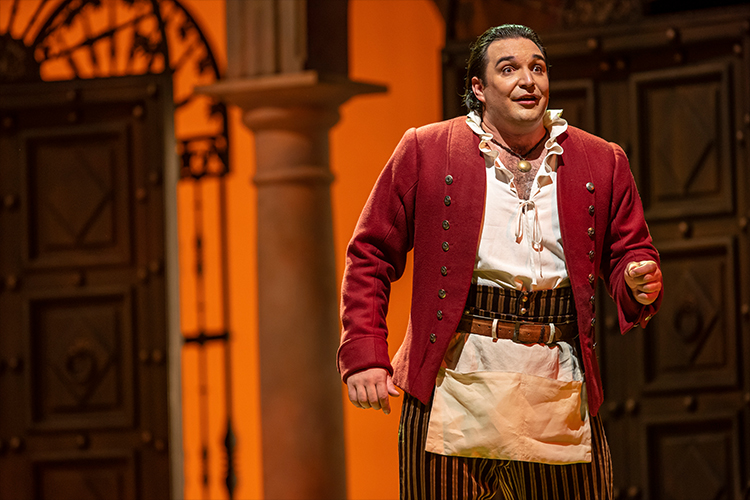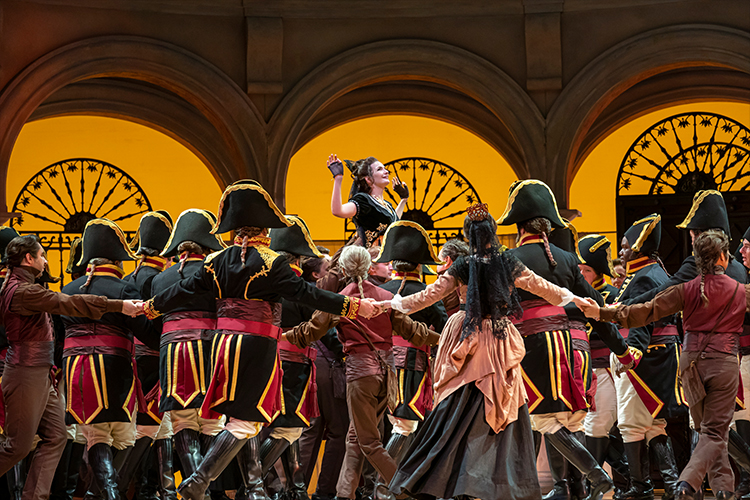
The Barber of Seville
Welcome to Lyric's learning resources!
This is your all-access pass to the world of opera and musical theater. Scroll down to access the following resources to help you learn more.
Overview
Musical Highlights
Historical and Cultural Timeline
Composer and Librettist
“Ricco non sono”

The opera opens with Count Almaviva posing as the student Lindoro. He has a noisy group of musicians with him at first, but he doesn’t capture the attention of Rosina until he sings alone with his guitar.
Things to listen for
-
Almaviva (a.k.a. Lindoro) has written the song, and it’s kind of cheesy. Listen for how he forces the lines of his song to rhyme (and then read the translation to understand what he’s singing).
-
When Rosina begins, there is no accompaniment for her. The guitar is played by Lindoro (or at least appears to be) and he’s too enamored by Rosina’s singing and beauty to continue playing.
“Largo al factotum”

Sung by Figaro
This is our introduction to the title character of the opera. Figaro is a Barber and much more. This aria describes how he is in demand for service by everyone in the city. Note: a factotum is a word for a person who does all kinds of work.
Things to listen for
-
When Figaro sings his name, it’s as if the people of Seville are calling for him. It starts bombastic, then gets softer and slower. Why might this phrase start big and become quieter?
-
This is an aria of extremes. When Figaro sings “one at a time” the aria slows down, but when he sings “faster, faster” things get faster and faster.
“Una voce poco fa”

Sung by Rosina
Rosina is in love with Lindoro. She sings of how Bartolo will never accept this fact, but she’s planning to trick her guardian into letting her be with the man she loves.
Things to listen for
-
The aria starts softly and builds. The first time it builds to a forte. Rosina is repeating two lines. Why do you think Rossini wanted to emphasize this part of the aria? What is especially important about those words?
-
In the second part of the aria, the accompaniment becomes much more active. What instruments are added? How is what they are playing different than at the beginning?
“Di sì felice innesto” (Finale)

Sung by full cast and chorus
Finale Part 2
Finale Part 3
The Finale of the opera is a perfect example of how Rossini built excitement. He did this by making the music faster and higher. Plus, he adds more voices and instruments as the music progresses. This process of heightening the music through changes in rhythm, melody, dynamics and instrumentation over the course of many repetitions is called a Rossini Crescendo (or a Rossini Rocket).
Things to listen for
-
Part 1: You first hear the long phrases in the orchestra, then repeated by Figaro.
-
Part 2: The excitement builds as more voices and instruments are added.
-
Part 3: The phrases from before are shorter and repeat more quickly. Everyone is singing and the full orchestra is playing. The music gets faster toward the opera’s end.
Photos: Todd Rosenberg

